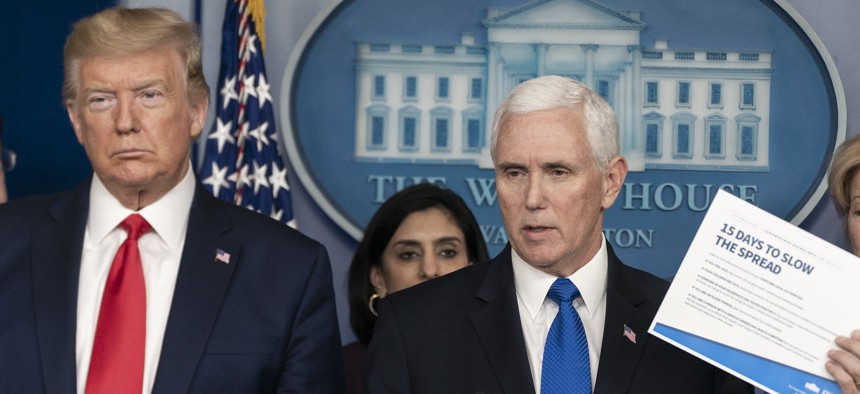One more thing to put on hold during the ongoing coronavirus pandemic might be your plans for retirement. Think of this like retiring during the furlough of 2018-19 that went on for 35 days. During that time, only essential work was done. Retirement processing temporarily slowed and those employees who had the unfortunate timing to retire during the furlough had to live with uncertainty about the status of their retirement claims. Some employees had to wait longer for their benefits, because their applications hadn’t left their agencies during the furlough.
During this new crisis, most employees are still working (some in a telework status), but there are still some issues to deal with if you are trying to transition from employed to retired status.
I received this email from an employee who is planning her retirement for the end of the current leave period. She writes:
I have 40 years of federal government service and have begun the process to retire on March 28, 2020. I am under the CSRS retirement program. Now I have concerns if I should hold off retiring because of the coronavirus pandemic. I also have a few dollars saved that I solely put into TSP. I pretty much felt confident with retiring, but with the pandemic I am now questioning if the timing is good (to retire this month) or should I wait until later in the year. My goal was to reach 40 years and retire. I made it to 40 years this month. Should I be concerned and what should I consider?
I responded that since her main source of income in retirement would come from her CSRS retirement benefit, at least the recent stock market roller coaster would have minimal effect on her retirement income. She doesn’t need to withdraw from her retirement savings immediately.
I called the Office of Personnel Management’s call center and found that the agency is still open for business and processing all work within retirement services. But I expect some processing to take longer because so many OPM employees, and those at other agencies, are teleworking. Remember that federal retirement processing is still paper-based, and much of the work is done at an underground facility in Boyers, Pennsylvania. So far, the operation remains open and employees have continued to report for work, but that could change.
The operations of the Thrift Savings Plan also continue normally for now. The TSP continues to process forms and requests,TSP representatives are available to answer your questions, and you can access your account online. This is a changing situation, though, and that could eventually affect the TSP’s operations.
The stock market has obviously been on a wild ride since the pandemic started, but this isn’t the first time federal employee investors have seen their investments take a hit. For advice on how to handle the current situation, take a look at these GovExec articles:
- Where to Turn When the TSP Tanks (Sept. 18, 2008)
- Managing Your TSP Account Through Coronavirus Turbulence (March 13, 2020)
Finally, here’s another tip I provided to my correspondent above: If she wants to go ahead with retiring in the near future, she might want to delay the date slightly, to April 3 instead of March 28. This is because she would be paid her salary for an additional week of work and her CSRS retirement would commence on April 4.
For both CSRS and FERS retirements, voluntary retirement annuities start the first day of the month after the employee separates from service and meets age and service requirements. However, under CSRS, the retirement benefits of employees who serve in pay status for three days or fewer in the month of retirement start on the day after separation. For purposes of applying the three-day rule, all days—including non-work days—are used.
If my correspondent were retiring under FERS, I would have suggested March 31 as a better retirement date. That way, she’d be able to receive her salary for the last two days of March. Her retirement would commence on April 1 regardless of whether she retired on the 28th or the 31st. In either case, her last paycheck would include salary for the days worked in the last pay period and prorated withholdings for insurance and retirement contributions, even though the full pay period was not completed. Leave accrual is not prorated and annual and sick leave is only accrued when the full number of hours are completed during the pay period.








